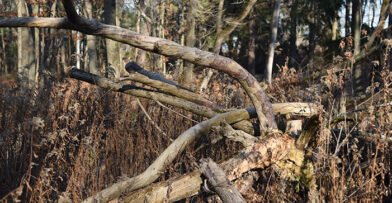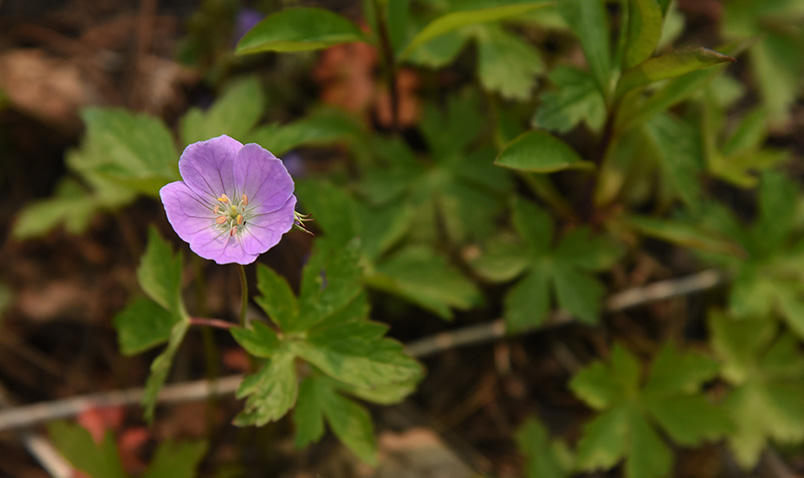
The Importance of Coarse Woody Habitat
When visitors hike our Central Wetlands Loop, Elizabeth Trail, and our other forested areas, you… Read Story >

We’re busy at Schlitz Audubon restoring the land and improving visitor experience. Visit this page to stay updated on current conservation projects.
In fall 2023, we embarked upon a transformational project which promises to protect the bluff as well as create a space of great beauty, tranquility, and ecological sustainability. The project reimagined how the area could better serve and delight our visitors, as well as conserve and beautify the Center. It resulted in a plan to remake the formerly grassy space at the Pavilion into a durable, multiple use courtyard surrounded by thoughtfully designed gardens.
The Pavilion’s courtyard is being resurfaced with locally sourced stone obtained from a quarry in Beaver Dam. The project will mitigate erosion run-off on the northeast corner of the space, preserving the health of the bluff – home to a remnant old growth forest in pre-European condition, one of the highest quality habitats on the Schlitz Audubon property – as well as the terrace below.
Learn more about the Bluff Pavilion Project.
A remarkable example of habitat transformation is providing a welcome and stunning visual change at Lake Drive and Brown Deer Road. A beautiful open mix of wetland and meadow now greets all visitors to the Center thanks to removal of the dead and dying ash trees, buckthorn and other invasive plants that had overtaken this corner of the property. Continuing restoration will further enhance the ecological significance of this habitat as it evolves into a vibrant and diverse hardwood swamp.
Thanks to a grant from the U.S. Fish & Wildlife Service, this project expands upon hardwood swamp restoration work undertaken in an adjacent project area from 2020-2022. A rare habitat type, our extended hardwood swamp will fill an important ecological niche for a variety of plant, bird, and animal species that rely upon such specialized habitat for survival.
Learn more about the Hardwood Swamp Restoration Project Phase 2.
The current phase of the Hardwood Swamp Project will extend through 2024.
The Central Wetlands Loop is at the heart of the Schlitz Audubon trail experience. This large trail loop is easy to find and simple to navigate, facilitating awe-inspiring outdoor experiences and plentiful educational opportunities.
We are happy to announce that the entire one-mile Central Wetlands Loop is now accessible to all, including people who use wheelchairs or other mobility devices. All trail segments are made of either crushed limestone or elevated boardwalk, and take you through various habitats including wetlands and three ponds. Hikers will glimpse prairie and ravine habitat carefully restored with more than 25,000 trees, shrubs, and plants. New tree plantings include bur oak, hackberry, and sugar maple, while shrubs include pasture rose, elderberry, and meadowsweet. When in season, Pennsylvania sedge, marsh blazing star, and cardinal flower will both provide beautiful blooms and nutrients essential to pollinator species.